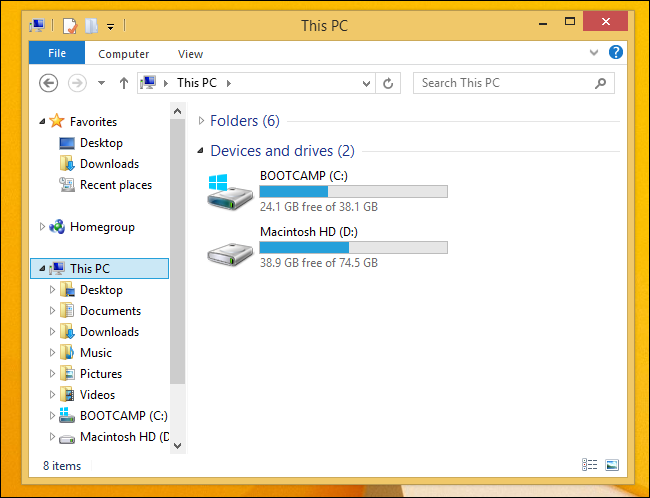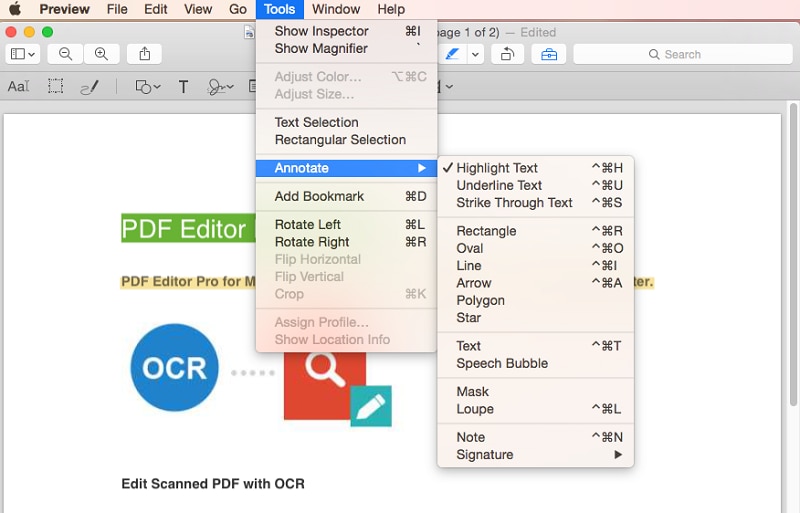I have a Mac and an external hard drive that includes some important family files. I bought a 4TB hard drive for my dad, and thought it would be easy to copy the files over so he could use them on his PC. However, my Mac doesn’t recognise his hard drive, and his PC won’t recognise my hard drive. Any suggestions?
Carla
HSFX is Mac OS Extended with case-sensitive file names. Run HFSExplorer (we're using Windows 7 64-bit here and it works fine) and ignore any message that a DLL file is missing.
Mac Os File System Reader For Windows
The hard drives should not be a problem, unless your computers are very old. Macs and Windows machines do have their own preferred file formats for internal hard drives, but external hard drives don’t always ship with these pre-installed. They tend to use a version of Microsoft’s FAT file format, which dates back to the MS DOS (or IBM PC DOS) operating system used by the IBM PC in 1981. Most operating systems can read files in these old formats.
- Thus, in short you cannot access your Mac file system from Windows Vista, and vice versa. The reason being is that they are (2) different, and proprietary, file structures. The reason being is that they are (2) different, and proprietary, file structures.
- Storage utility software vendor Paragon Software Group on Tuesday said it had tweaked its Universal File System Driver technology to support Mac volumes on Windows systems.
When DOS was born, popular hard drives only had 5MB or 10MB of storage space, which you could fill today with a single animated GIF. In 1996, Microsoft introduced FAT32 to handle much larger hard drives, and FAT32 is still in common use. However, hard drives keep getting bigger -- now they are typically 500GB to 4TB -- and in 2006, Microsoft released a new extended version, exFAT. In theory, this can handle drives up to 64 zettabytes, though 512TB is the recommended maximum.
Hard drives will have to double in size another seven times to reach that.
If your dad’s new 4TB EHD (external hard drive) has been formatted in FAT32 or exFAT, then both his PC and your Mac should be able to read it. All updated versions of Windows XP and later versions of Windows support both FAT32 and exFAT. Apple already supported FAT32 and it added support for exFAT in Mac OS X 10.6.5 (Snow Leopard) and later versions of OS X.
Even if the 4TB drive has been formatted in Windows’ NTFS (New Technology File System) format, then your Mac should still be able to read it, though it won’t be able to write to it. Apple added read-only support for NTFS in 2003 with Mac OS X 10.3 (Panther) and many Mac users need it for running Windows under Boot Camp.
Your dad can check the format of his 4TB EHD by running Windows Explorer and selecting Computer in the left-hand pane. All the PC’s drives will be shown in the right-hand pane. If he right-clicks on the 4TB drive and selects Properties from the drop-down menu, the Properties sheet will have an entry for “File System” that will usually be NTFS or FAT32. Either should be fine. However, if both of you want to read and write to this particular EHD, I suggest reformatting it in exFAT while it’s still empty. You should then be able to copy files to it with your Mac. If your Mac still refuses to recognise it, you can tell it to initialise the drive as an MS-DOS disk (ie FAT32).
Meanwhile, your external hard drive is probably formatted in a version of Apple’s Hierarchical File System (HFS). Windows PCs won’t normally read that without an additional software driver, such as Erik Larsson’s HFSExplorer or the DiskInternals Linux Reader. (It’s a Windows program that reads Linux and Mac disks.) Both are free.


So, you could use your Mac to copy the files to your dad’s 4TB FAT32/exFAT drive, or your dad could install a free HFS+ driver and use his PC to read them from your Mac drive. I don’t know which would be simpler, but if the first one doesn’t work, you can try the second.
Finally, although an external hard drive is a good way to move files from a Mac to a PC, there are other ways to do it. The most obvious solution is to use a USB Flash drive. This can get tedious, depending on how much data you need to move. However, SanDisk sells thumb drives with capacities up to 128GB, so it’s just a case of deciding how big a drive you need. Some of the Amazon reviews complain that the transfer speed of the 128GB version is very slow, but trying to do it via a cloud storage system would be even slower.
A less obvious solution is to use a standard ethernet cable to connect the two machines together, as shown in this YouTube video. This should also work quickly.
Playing ALAC files in Windows
I have some Apple Lossless files on my Mac and also want to play them on my Windows PC. Is there a simple way to do this?
Mac Os File System Format

Anon
The problem with ALAC is that it’s not widely supported outside the Apple world, where FLAC is the de facto lossless standard. The answer depends on whether you want to convert your <A href=“https://en.wikipedia.org/wiki/Alac“>ALAC (Apple Lossless Audio Codec)</A> music files to another format that’s more popular on Windows, and if so, which.
The options include FLAC (Free Lossless Audio Codec) and compressed “lossy” formats such as MP3 or AAC. If you don’t need the full fidelity of lossless playback, then Lame MP3 or AAC will save a lot of space. Apple lossless files take up about 5MB per minute whereas MP3 might be 1MB per minute.
One lossless format can be converted into another lossless format without any loss of sound quality, so that’s not a problem. However, people often convert lossless files into a compressed format for use on a PC, phone or MP3 player. This does cause some loss in sound quality, though you may not be able to hear the difference.
You should be able to play your ALAC files in Windows by using either the VLC media player or foobar2000, but that may not fit well with whatever you use at the moment. However, if you have an iPhone and/or an iPad or iPod, then these support Apple Lossless. Also, you will already be using iTunes for Windows, QuickTime etc. In this scenario, converting your ALAC files to FLAC would be a bad idea, though you should still consider AAC.
However, if you use an Android phone or tablet, then it may be worth converting them, as FLAC is now supported as standard on Android. On your PC, you can download a set of open codecs from Xiph.org. The package also includes support for Ogg Vorbis, Speex, Theora, and WebM. These are directshow filters and should work normally with Windows Media Player and hundreds of other standard Windows programs.
For people who do want to do file conversions, XLD (X Lossless Decoder) is a good option for Mac users. It’s also much better at ripping audio CDs than iTunes, more like EAC (Exact Audio Copy) for Windows.
Windows users who want to convert ALAC files to FLAC and other formats often like dbPowerAmp, but it costs £24 to register after the free trial period. People who can’t or won’t pay can use xrecode, or the foobar2000 media player to do file conversions.
•How to delete your Facebook account
This article contains affiliate links, which means we may earn a small commission if a reader clicks through and makes a purchase. All our journalism is independent and is in no way influenced by any advertiser or commercial initiative. By clicking on an affiliate link, you accept that third-party cookies will be set. More information.
HFS for Windows - Paragon HFS+ is a Mac File System Driver for Windows that gives user full access to Mac HFS+ File systems from Microsoft Windows and its applications. With Paragon HFS+ installed on your Windows system you will experience total communication between MAC & Windows with the industry’s highest performing file system technology. Paragon HFS+ implement a full set of drivers with complete read/write access to partitions of most of the file systems. HFS+ for Windows delivers maximum convenience with no more worries about cross-platform computing.
Mac File System Driver for Windows - Get access Mac-formatted partitions in Windows systems with the fastest and most stable HFS driver on the market. All in all, this application will allow you to use Mac-formatted partitions when using Windows. You will be able to transfers files at a higher rate to native HFS file-system performance. Highly stable even when transferring big media files between systems. Works flawlessly with any type of hard disk (USB, FireWire, ESATA, SATA or IDE). Paragon HFS+ is the only solution that provides full read-write access to HFS+/HFSX partitions on any type of disks (APM, GPT, MBR) under most of Windows versions ( Windows 8 / 8.1, 7, Vista, XP2003 or 2008 Server).
Download 10 days trial version Paragon HFS+.
Paragon HFS+ file size 6.7MB.
Paragon HFS+ Website
HFS for Windows Related Software:
Mac File Size Viewer
Free Partition Manager
HFS - Free File Sharing Server
Free Windows Universal Disk Format Reader
WiFi File Transfer for PC, Mac, iOS and Android